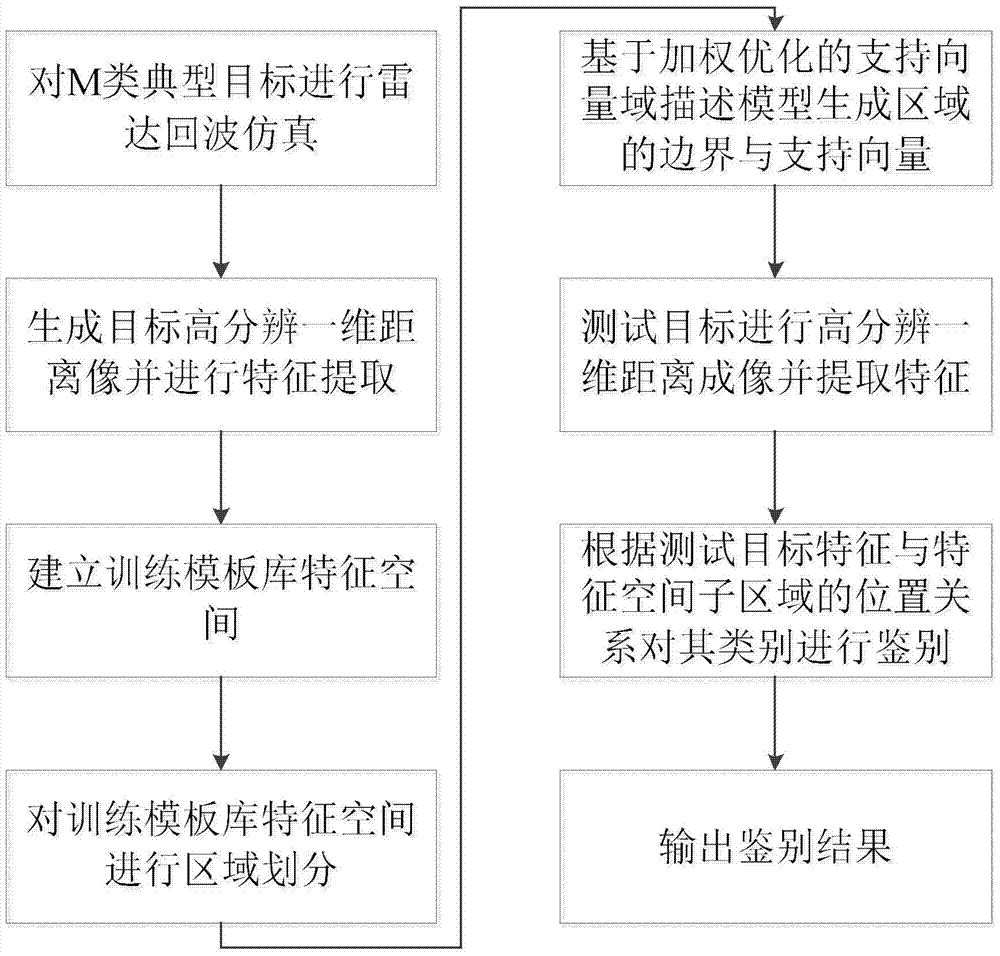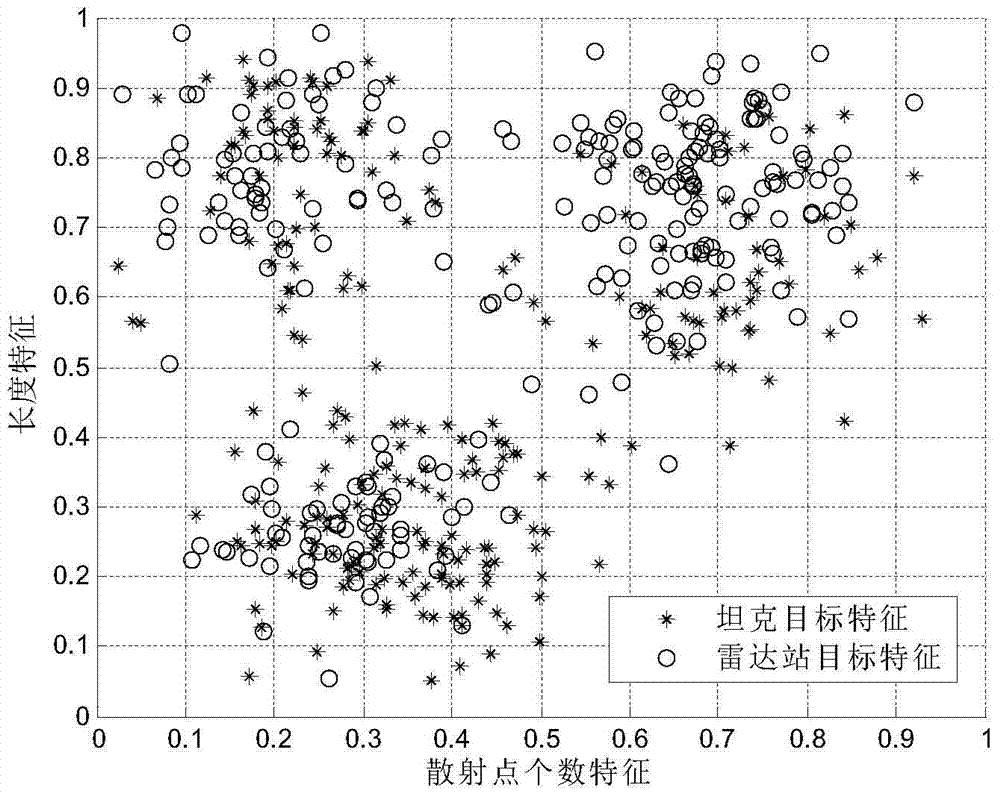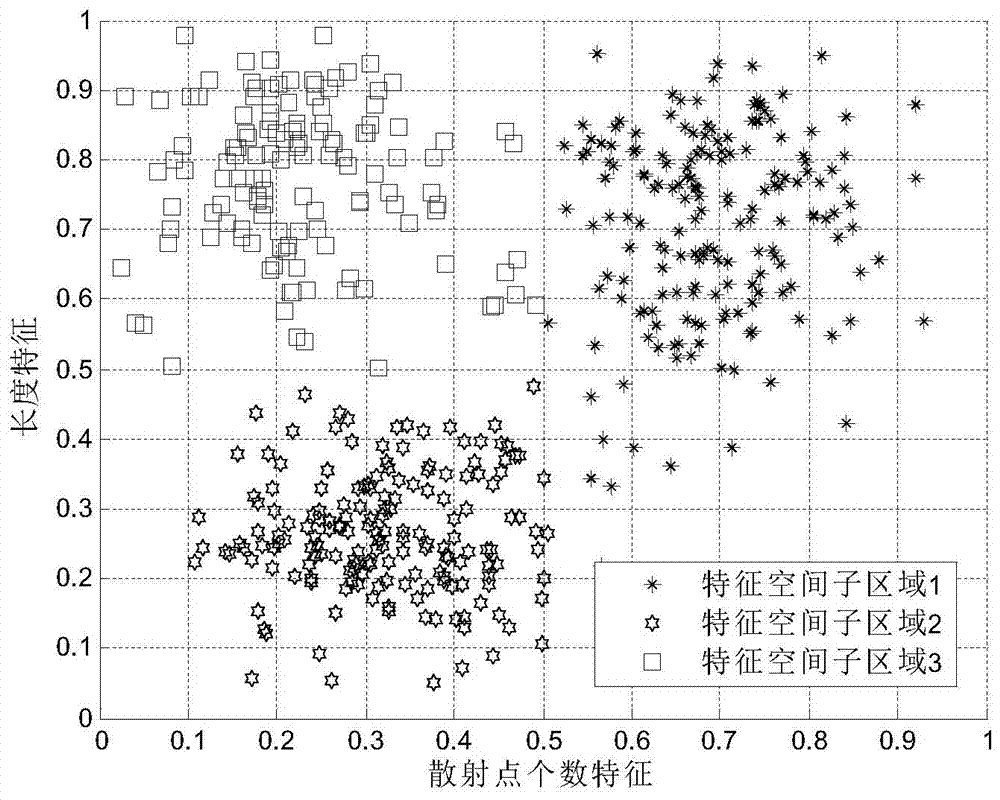Design Method of Radar Ground Target Discriminator Based on Spatial Distribution
A technology for spatial distribution and target identification, applied in the field of radar ground target discriminator design, can solve the problems of inability to meet the requirements of real-time processing of radar signals, high computational complexity, and performance degradation, so as to improve target identification performance and achieve real-time processing. , the effect of improving target identification ability
- Summary
- Abstract
- Description
- Claims
- Application Information
AI Technical Summary
Problems solved by technology
Method used
Image
Examples
Embodiment Construction
[0037] refer to figure 1 , the realization steps of the invention are as follows:
[0038] Step 1. Construct the feature space of the radar target discriminator training template library.
[0039] (1a) Perform radar echo simulation on typical target high-resolution one-dimensional range images:
[0040] (1a1) In the present invention, the stepped frequency radar synthesis broadband system is adopted, and the radar echoes of typical M-type targets are simulated to obtain a total of N m Frame echo: where e m,n Represents the nth frame of radar echo of a typical target of type m, and its signal model is expressed as:
[0041]
[0042] Where rect(t / τ) represents pulse modulation, the specific formula is:
[0043]
[0044] t represents time sampling, A m,n Indicates the radar echo amplitude of the nth frame of the target of the m category, f c Indicates the radar carrier frequency, Tr indicates the pulse repetition period, τ indicates the pulse width, Δf indicates the...
PUM
 Login to View More
Login to View More Abstract
Description
Claims
Application Information
 Login to View More
Login to View More - R&D
- Intellectual Property
- Life Sciences
- Materials
- Tech Scout
- Unparalleled Data Quality
- Higher Quality Content
- 60% Fewer Hallucinations
Browse by: Latest US Patents, China's latest patents, Technical Efficacy Thesaurus, Application Domain, Technology Topic, Popular Technical Reports.
© 2025 PatSnap. All rights reserved.Legal|Privacy policy|Modern Slavery Act Transparency Statement|Sitemap|About US| Contact US: help@patsnap.com



